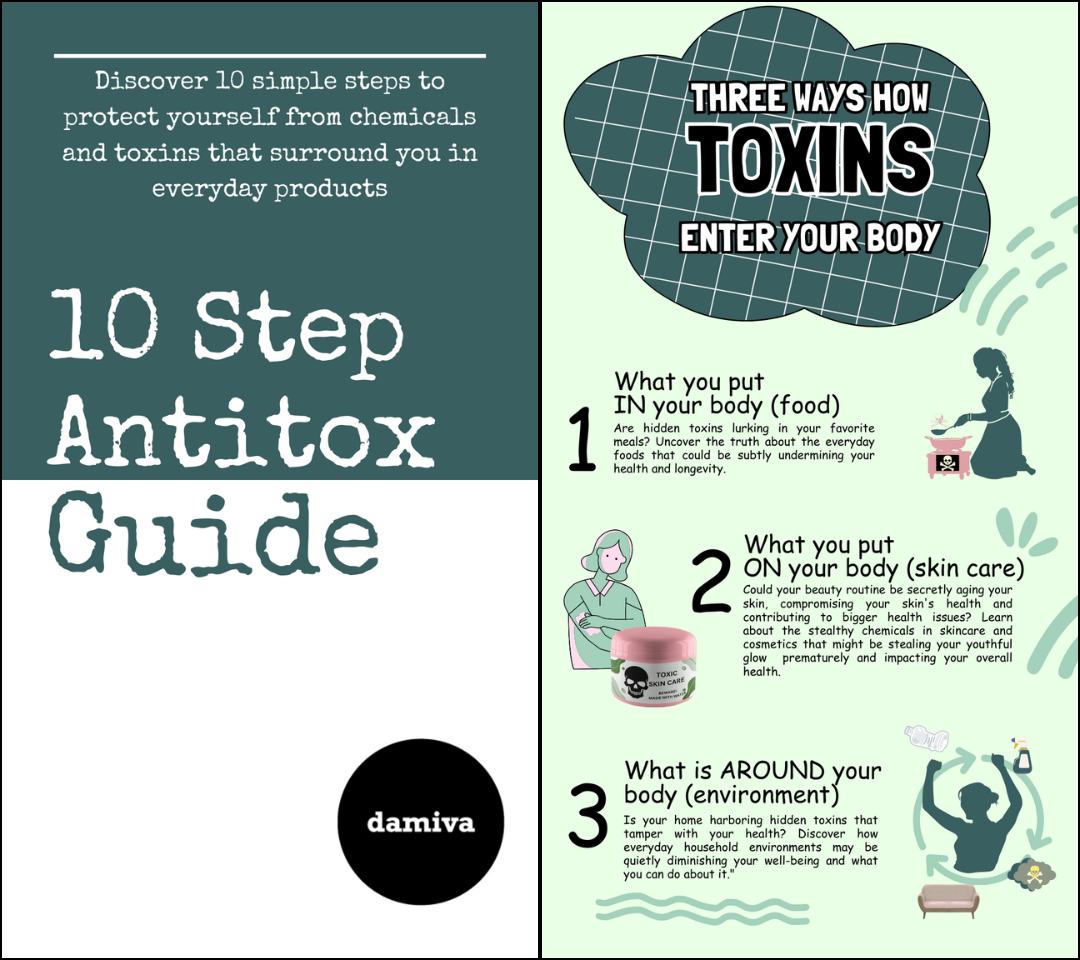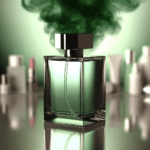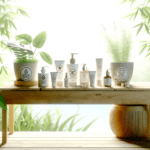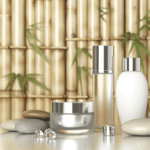Introduction
Overview of Fragrance-Free vs. Fragrance-Added Products
In today’s market, consumers are presented with a plethora of personal care and household products, many of which are either fragrance-free or fragrance-added. Fragrance-added products are designed to provide a pleasant scent, often masking the natural odors of the ingredients. These scents can be derived from natural sources like essential oils or created synthetically in laboratories. On the other hand, fragrance-free products are formulated without any added scents, catering to individuals who prefer or require products without additional fragrances due to allergies, sensitivities, or personal preference.
Importance of Understanding Synthetic Scents
Understanding synthetic scents is crucial for several reasons. Firstly, synthetic fragrances are ubiquitous, found in everything from shampoos and lotions to cleaning products and air fresheners. These fragrances are often complex mixtures of various chemicals, some of which can have adverse health effects. For instance, synthetic fragrances can contain volatile organic compounds (VOCs) that contribute to indoor air pollution and can trigger respiratory issues, skin irritations, and even hormonal imbalances. By understanding what synthetic scents are and how they are made, consumers can make more informed choices about the products they use daily.
Relevance to Health-Conscious Women
For health-conscious women, the choice between fragrance-free and fragrance-added products is particularly pertinent. Women are often the primary consumers of personal care products and are more likely to be affected by the chemicals these products contain. Studies have shown that certain chemicals in synthetic fragrances, such as phthalates and parabens, can act as endocrine disruptors, potentially leading to hormonal imbalances and increased risks of conditions like breast cancer. Additionally, women with sensitive skin or respiratory conditions may find that fragrance-free products reduce the likelihood of adverse reactions. Understanding the potential health impacts of synthetic scents empowers women to make choices that align with their health and wellness goals.
In summary, the distinction between fragrance-free and fragrance-added products is more than a matter of personal preference; it is a significant health consideration. By delving into the world of synthetic scents, we can better understand their potential impacts and make informed decisions that promote overall well-being.
Understanding Synthetic Scents
What Are Synthetic Scents?
Synthetic scents, also known as artificial fragrances, are chemically engineered compounds designed to mimic natural aromas. These scents are prevalent in a wide range of products, including perfumes, air fresheners, cleaning supplies, and personal care items like shampoos and lotions. Unlike natural fragrances derived from essential oils and plant extracts, synthetic scents are created in laboratories using a variety of chemical processes. The primary advantage of synthetic scents is their cost-effectiveness and the ability to produce consistent, long-lasting aromas.
Common Chemicals in Synthetic Fragrances
Synthetic fragrances are composed of numerous chemicals, many of which can pose health risks. Some of the most common chemicals found in synthetic fragrances include:
- Phthalates: Often used to make scents last longer, phthalates are known endocrine disruptors that can interfere with hormonal balance.
- Parabens: These are preservatives that can mimic estrogen and have been linked to breast cancer.
- Formaldehyde: A known carcinogen, formaldehyde is sometimes used as a preservative in fragranced products.
- Styrene: Classified as a possible human carcinogen, styrene is used in the production of synthetic fragrances.
- Oxybenzone: Another endocrine disruptor, oxybenzone is often found in sunscreens and can be absorbed through the skin.
These chemicals can cause a range of health issues, from skin irritations and allergic reactions to more severe conditions like hormonal imbalances and cancer.
How Synthetic Scents Are Made
The creation of synthetic scents involves several complex chemical processes. Here’s a simplified overview of how these fragrances are typically made:
- Selection of Base Chemicals: The process begins with the selection of base chemicals, which are often derived from petroleum or natural gas. These chemicals serve as the building blocks for the synthetic fragrance.
- Chemical Synthesis: Through various chemical reactions, these base chemicals are transformed into aromatic compounds. This can involve processes like esterification, where acids and alcohols react to form esters, which are common in many fragrances.
- Blending: The synthesized aromatic compounds are then blended to create the desired scent profile. This step requires a high level of expertise, as the balance of different compounds can significantly affect the final aroma.
- Stabilization: To ensure the fragrance remains stable and effective over time, additional chemicals such as preservatives and fixatives are added. These substances help maintain the scent’s integrity and longevity.
- Testing and Quality Control: The final blend undergoes rigorous testing to ensure it meets safety and quality standards. This includes checking for any potential allergens or harmful effects.
While synthetic scents offer the advantage of consistency and cost-effectiveness, the chemicals involved in their production can pose significant health risks. Understanding these risks is crucial for making informed choices about the products we use daily.

Popular Read: Endocrine Disruptors in Skincare: What You Need to Know
Health Impacts of Synthetic Scents
Endocrine Disruptors and Hormonal Imbalances
Synthetic scents often contain chemicals known as endocrine disruptors, such as phthalates and synthetic musks. These substances can interfere with the body’s hormonal systems, leading to a variety of health issues. **Phthalates**, for instance, are linked to liver and breast cancer, diabetes, and obesity. They can also cause reproductive problems and developmental disorders, including autism and ADHD, especially when exposure occurs during fetal development. **Synthetic musks** are bioaccumulative, meaning they build up in the body over time, and have been found in breast milk, body fat, and even umbilical cord blood. These chemicals can disrupt the endocrine system, leading to hormonal imbalances that affect everything from metabolism to reproductive health.
Potential Links to Breast Cancer
There is growing concern about the potential links between synthetic fragrances and breast cancer. Many synthetic scents contain **parabens**, which are used as preservatives. Parabens can mimic estrogen, a hormone that plays a role in the development of breast cancer. Studies have found parabens in breast tissue, raising questions about their role in cancer development. Additionally, **phthalates** and other endocrine disruptors found in synthetic fragrances can also contribute to the risk of breast cancer by interfering with hormonal regulation.
Respiratory and Skin Irritations
Exposure to synthetic fragrances can lead to a range of respiratory and skin issues. **Volatile Organic Compounds (VOCs)**, commonly found in synthetic scents, can cause respiratory problems such as asthma, difficulty breathing, and coughing. These compounds can also trigger skin irritations, including contact dermatitis, rashes, and hives. **Limonene**, a common VOC in synthetic fragrances, can react with ozone to form formaldehyde, a known respiratory irritant. The cumulative effect of these chemicals can lead to chronic respiratory conditions and persistent skin problems.
Impact on Mental Health and Cognitive Function
The impact of synthetic fragrances on mental health and cognitive function is an area of increasing concern. Exposure to these chemicals has been linked to **neurological problems** such as headaches, dizziness, and migraines. Some studies suggest that synthetic scents can interfere with neurotransmitter function, leading to cognitive issues like difficulty concentrating, memory problems, and even mood disorders such as depression and anxiety. **Phthalates** and other neurotoxic compounds in synthetic fragrances can disrupt the normal functioning of the nervous system, exacerbating these mental health issues.
In summary, the health impacts of synthetic scents are far-reaching, affecting everything from hormonal balance and cancer risk to respiratory health and cognitive function. Understanding these risks is crucial for making informed choices about the products we use daily.
Benefits of Fragrance-Free Products
Reduction in Exposure to Harmful Chemicals
Choosing fragrance-free products significantly reduces your exposure to harmful chemicals commonly found in synthetic fragrances. Many synthetic scents contain volatile organic compounds (VOCs) and phthalates, which have been linked to various health issues, including respiratory problems, hormonal imbalances, and even cancer. By opting for fragrance-free products, you minimize the risk of inhaling or absorbing these potentially dangerous substances, thereby promoting a healthier living environment.
Improved Skin Health
Fragrance-free products are particularly beneficial for individuals with sensitive skin or conditions like eczema. Synthetic fragrances can be irritants, causing redness, itching, and rashes. By eliminating these irritants, fragrance-free products help maintain the skin’s natural barrier, reducing the likelihood of adverse reactions. This is especially important for babies and individuals with compromised skin health, as their skin is more susceptible to irritation and damage.
Better Respiratory Health
Inhaling synthetic fragrances can trigger respiratory issues such as asthma, allergies, and other breathing difficulties. Fragrance-free products eliminate these triggers, making it easier for individuals with respiratory conditions to breathe comfortably. This is particularly crucial in indoor environments where air quality can be compromised by the continuous use of fragranced products. By choosing fragrance-free options, you contribute to better indoor air quality and overall respiratory health.
Enhanced Overall Well-being
Using fragrance-free products can lead to an enhanced sense of well-being. Synthetic fragrances are known to cause headaches, migraines, and even cognitive disturbances in some individuals. By removing these potential triggers from your daily routine, you can experience fewer headaches and a clearer mind. Additionally, the absence of synthetic scents can create a more calming and less stressful environment, contributing to improved mental health and overall quality of life.
In summary, the benefits of switching to fragrance-free products are manifold. From reducing exposure to harmful chemicals and improving skin and respiratory health to enhancing overall well-being, fragrance-free options offer a safer and healthier alternative for everyone, especially those with sensitivities or health concerns.

Feeling You Have a Right to Safe Beauty & Fem Care?
If so, it may be time for a change. It starts with knowledge. We have a few suggestions in our new guides.
How to Identify Fragrance-Free and Fragrance-Added Products
Reading Labels and Ingredient Lists
Understanding how to read labels and ingredient lists is crucial in identifying whether a product is fragrance-free or contains synthetic scents. When examining a product, look for terms such as “fragrance,” “perfume,” or “parfum” on the ingredient list. These terms indicate the presence of synthetic or artificial fragrances. Conversely, if a product is labeled as “fragrance-free,” it should not contain any added fragrances, whether natural or synthetic. However, be aware that “fragrance-free” does not mean the product is odorless; it simply means no additional fragrances have been added. The product may still have a natural scent from its ingredients.
Understanding Marketing Terms
Marketing terms can often be misleading, making it essential to understand the difference between “fragrance-free” and “unscented.” While “fragrance-free” means no fragrances have been added, “unscented” products may still contain chemicals that mask odors, giving the impression of being scent-free. These masking agents can still be harmful, so it’s important to read the ingredient list carefully. Additionally, terms like “natural” or “organic” do not necessarily mean the product is free from synthetic fragrances. Always verify by checking the ingredient list for any mention of fragrance-related terms.
Certifications and Standards to Look For
Certifications can provide an extra layer of assurance when selecting fragrance-free products. Look for certifications from reputable organizations that verify the absence of synthetic fragrances. Some common certifications include:
- USDA Organic: Products with this certification are made with organic ingredients and are free from synthetic fragrances.
- EWG Verified: The Environmental Working Group (EWG) verifies that products meet strict health and safety standards, including the absence of harmful fragrances.
- Leaping Bunny: This certification ensures that products are cruelty-free and often indicates a commitment to using safer, non-toxic ingredients.
These certifications can help you make more informed choices and ensure that the products you use are genuinely free from synthetic fragrances.
By understanding how to read labels, decipher marketing terms, and recognize trustworthy certifications, you can more effectively identify fragrance-free products and make healthier choices for your personal care routine.
Do you know the 3 main ways how your body is exposed to harmful chemicals, which affect your hormones, your thyroid, health and beauty?
If not, it may be time to learn about them. It takes about 1-2 minutes.
We have a few suggestions how to avoid these silent health and immune system killers in our new guide.

Making the Switch to Fragrance-Free
Steps to Transition Your Personal Care Routine
Switching to fragrance-free products can be a gradual process, but it is essential for reducing exposure to potentially harmful chemicals. Here are some steps to help you transition smoothly:
1. **Audit Your Current Products**: Start by examining the personal care products you currently use. Identify which ones contain synthetic fragrances by reading the ingredient lists.
2. **Prioritize Replacement**: Replace products that you use most frequently or those that stay on your skin for extended periods, such as lotions, deodorants, and facial creams.
3. **Research Alternatives**: Look for fragrance-free alternatives for each product. Many brands offer fragrance-free lines, so you don’t have to compromise on quality.
4. **Test New Products**: Introduce new products one at a time to monitor how your skin and body react. This will help you identify any potential irritants.
5. **Gradual Replacement**: Gradually replace fragranced products with fragrance-free options as you run out of your current supplies.
Tips for Finding Reliable Fragrance-Free Products
Finding truly fragrance-free products can be challenging due to misleading marketing terms. Here are some tips to help you identify reliable options:
1. **Read Labels Carefully**: Look for products labeled as “fragrance-free” or “unscented.” Be cautious of terms like “natural fragrance” or “essential oils,” as these can still cause irritation.
2. **Check Ingredient Lists**: Ingredients like “parfum,” “fragrance,” or “essential oil” indicate the presence of scents. Avoid products with these ingredients.
3. **Look for Certifications**: Certifications from organizations like the Environmental Working Group (EWG) or the National Eczema Association can indicate that a product is free from harmful chemicals.
4. **Research Brands**: Some brands are known for their commitment to fragrance-free products. Research and choose brands that prioritize transparency and safety.
5. **Consult Reviews**: User reviews can provide insights into the effectiveness and safety of fragrance-free products. Look for feedback from individuals with similar skin types or sensitivities.
DIY Alternatives and Natural Scents
If you prefer a hands-on approach, consider making your own personal care products. DIY alternatives can be customized to suit your needs and ensure that they are free from synthetic fragrances.
1. **DIY Skincare**: Simple ingredients like coconut oil, shea butter, and aloe vera can be used to create moisturizers, lip balms, and lotions. These natural ingredients are gentle on the skin and free from synthetic fragrances.
2. **Homemade Cleaners**: Vinegar, baking soda, and lemon juice are effective natural cleaners. They can be used to create household cleaning solutions that are safe and fragrance-free.
3. **Natural Scents**: If you miss having a pleasant scent, consider using natural essential oils in moderation. Lavender, chamomile, and eucalyptus oils can provide a subtle fragrance without the harmful effects of synthetic chemicals. However, be mindful of potential sensitivities and always perform a patch test before using essential oils on your skin.
4. **Recipes and Resources**: Numerous online resources and books offer recipes for DIY personal care and cleaning products. These guides can help you create effective and safe alternatives tailored to your preferences.
By following these steps and tips, you can successfully transition to a fragrance-free lifestyle, reducing your exposure to potentially harmful synthetic scents and improving your overall well-being.

Do you have the most commonly used but toxic, disease bringing chemicals in your skin care? Many chemicals in skincare are hormone disruptors and make menopause symptoms worse.
Find out more…
Conclusion
Recap of Key Points
Throughout this article, we have delved into the significant differences between fragrance-free and fragrance-added products, particularly focusing on synthetic scents. We explored what synthetic scents are, the common chemicals they contain, and how they are manufactured. We also examined the various health impacts of synthetic scents, including their role as endocrine disruptors, their potential links to breast cancer, and their effects on respiratory and skin health, as well as mental health and cognitive function. Additionally, we highlighted the benefits of opting for fragrance-free products, such as reduced exposure to harmful chemicals, improved skin and respiratory health, and enhanced overall well-being. Finally, we provided practical advice on how to identify fragrance-free products and make the switch to a fragrance-free lifestyle.
Encouragement to Make Healthier Choices
Making the switch to fragrance-free products can seem daunting, but the benefits to your health and well-being are substantial. By reducing your exposure to synthetic chemicals, you can minimize the risk of allergic reactions, hormonal imbalances, and other health issues. Start by reading labels carefully and opting for products that are clearly marked as fragrance-free. Look for certifications and standards that guarantee the absence of synthetic fragrances. Remember, every small step you take towards a fragrance-free lifestyle is a step towards better health.
Final Thoughts on Living a Chemical-Free Lifestyle
Living a chemical-free lifestyle is not just about avoiding synthetic fragrances; it’s about making informed choices that prioritize your health and the environment. While it may require some initial effort to transition, the long-term benefits are worth it. Embrace natural alternatives like essential oils and DIY solutions that offer pleasant scents without the associated health risks. By being mindful of the products you use daily, you can create a safer, healthier environment for yourself and your loved ones. Remember, knowledge is power, and with the information provided in this article, you are now equipped to make healthier, more informed choices.


















